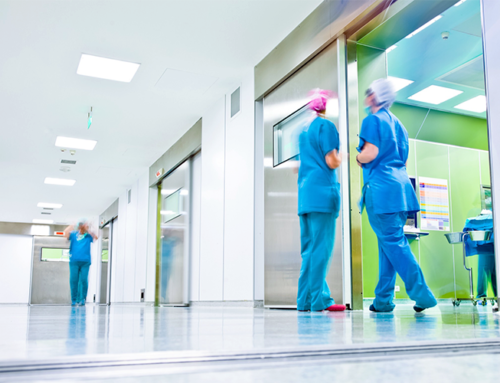
There are many terms that coincide with shift work (working the night shift, in particular)—“third shift, graveyard shift, rotating shift, alternate shift, and swing shift.” In America, around four million people – or roughly two in five employees – now work the night shift [1]. Additionally, even more people work floating or erratic schedules that may include night shifts and/or working on the weekend. As the demand for a 24-hour global society expands, the prevalence of sleep-related health problems continues to increase.
Consequences of Night Shift
Aside from the obvious sacrifices of working night shift—such as maintaining relationships, time with family, and social lives—studies by the University of Oxford and Harvard Medical School have discovered that jobs that extend the work day beyond the typical 9 a.m. to 5 p.m. can have an abundance of negative health implications on workers [2]. Negative health consequences include: chronic disruption of the circadian rhythm, type-2 diabetes, insufficient sleep or chronic sleep loss, insomnia, higher rates of cancer, poor diet, increased irritability, mood swings, and higher rates of depression.
Shiftwork, Lighting, and Circadian Rhythm
A 24-hour light-dark cycle is a fundamental characteristic of our planet’s environment. Light helps to coordinate the temporal rhythms of our physiology and behavior by sending signals to non-visual pathways in the brain that regulate circadian rhythm, our body’s natural internal clock.
Circadian rhythm utilizes the presence of light (or the lack thereof) to notify the body when to sleep and when to wake up. Blue and white light, naturally radiated throughout the day, are the main colors detected by sensitive, non-image-forming cells in our eyes, called the ipRGC, or intrinsically photoreceptive Retinal Ganglion Cells. These ipRGCs notify the body of changes in light throughout the day. Through centuries of evolution, the ipRGC photoreceptor has detected the presence of blue light (or daylight), causing the body to naturally produce the stimulant cortisol. When this blue light isn’t detected by the ipRGCs, our body gradually starts to reduce the levels of cortisol produced, and begins to produce melatonin—the hormone associated with sleep [3].
Shiftwork disrupts the body’s natural sleep/wake cycle causing many night workers to feel sleep deprived and fatigued. This is because when workers complete their shift and leave work, they are stimulated by the morning sunlight reaching the ipRGC, releasing cortisol causing them to feel awake and alert. This also typically leads workers to lose out on the recommended amount of sleep suggested by scientists.
Improving Labor through Lighting
One way that companies can help alleviate the health risks facing shift workers, and help employees to feel energized and well-rested, is by providing adequate lighting throughout the building during all hours of operation. Whether working the day shift, or working in the middle of the night, having lighting that stimulates workers will help encourage productivity and alertness. Laborers on third-shift can help reduce the sleep-depriving effects of working overnight themselves by wearing sunglasses on their way home from work. Additionally, using blackout curtains in the room you’re sleeping in cause help induce the feeling of night time and help promote quality rest and sleep. In order to encourage growth in the modern economy, installing and maintaining the proper lighting to keep overnight employees attentive and alert is essential.
At Energy Performance Lighting, we are the experts in lighting and lighting upgrades. We focus on providing a happier, healthier, and more alert environment for those working—all while delivering amazing energy savings. The staff at Energy Performance Lighting is more than happy to help and we encourage you to contact us if you have any questions about the lighting needs of your business.
Sources:
[1] DeSilver, D. (2016, September 01). 10 facts about American workers. Retrieved November 14, 2018, from http://www.pewresearch.org/fact-tank/2016/09/01/8-facts-about-american-workers/
[2] White Papers. (n.d.). Retrieved from https://www.circadian.com/solutions-services/publications-a-reports/white-papers.html
[3] Dijk, D., & Archer, S. N. (2009). Light, Sleep, and Circadian Rhythms: Together Again. PLoS Biology,7(6), e1000145, 1-4. Retrieved November 14, 2018, from < a href="http://www.plosbiology.org/" target="_blank">http://www.plosbiology.org/



